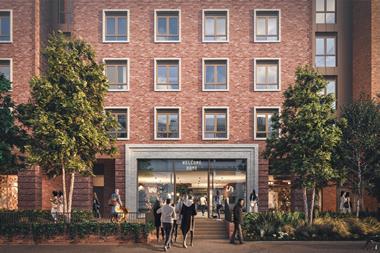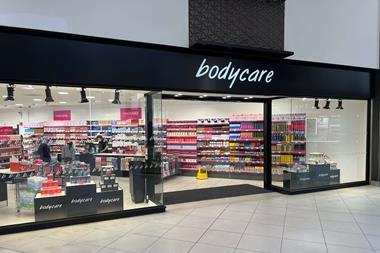We’re entering, we’re told, a golden age of rail travel. And it’s not just the high-speed link to Europe that has stirred up excitement. The diverse and bold retail offer at the stunning St Pancras International terminus has shown just how far station retail has moved on from the era of the pulp fiction paperback and soggy sandwich.
For some retailers, such as WHSmith, stations are at the heart of their business. For many others, it is an important add-on. But retailing in a railway station is by no means a simple process. The cost base is high and not all types of retail sit well with the frantic grab-and-go mentality of travel consumerism. While the footfall can be phenomenal, taking a store in a railway station is far more complex than opening one on the high street.
It also presents new challenges for retailers’ property directors. The landlord holds more cards than on the high street or in a shopping centre because of how leases are negotiated, which can be far less retailer-friendly. What’s more, space constraints, engineering works, the threat of terrorism and unusually prohibitive lease clauses mean that there is less certainty than in other retail environments and long-term planning can be difficult.
Despite the challenges, retailers are queuing up to open shops in railway stations. Passengers are a temporarily captive audience and a large proportion can be counted on to spend when they are at a station. So, while the rules of the game may be different, it is a game that can be played to enormous gain and opens up a whole new market for retailers to exploit. And, with the number of people travelling by rail on the up, this may be an auspicious time to get on board.
However, having a waiting list of retailers puts landlords in a strong position. The process of taking a unit in a station is completely different to that for a shopping centre or high street. Rather than securing tenants through negotiating and agreeing on a lease, units in railway stations are bid for in an open-market system. Retailers estimate how much turnover they expect to take in a station and then bid based on how valuable a unit is to them. This means that railway station stores command particularly high rents – as much as double what the same amount of space would fetch on the high street. Retailers can expect to pay a fifth of their turnover in rent at a railway station.
SSP, the UK’s largest retailer in railway stations, operates 470 units – including Whistlestop, Marks & Spencer Simply Food stores, which it operates on a franchise basis, and catering units – in 170 stations. Business development director for UK rail Mark Kassapian believes that the rents in stations reflect the greater degree of control that landlords have. “Landlords are more in the driving seat. This means that rents are higher – Network Rail is a very commercial operation and most of the units are tendered on the open market,” he says.
The average lease is also much shorter than on the high street. Network Rail national leasing manager Helen Carr says: “Everything we do is on a turnover rent backed up by minimum guaranteed rents. Leases tend to be shorter – typically for retail, we would do a three- to six-year lease.”
In the driving seat
Having a list of retailers that are willing to pay higher rent and take short-term leases inevitably enables the landlord to keep prices high, particularly because space is so scarce. Network Rail owns 1,000 retail units in the UK, covering a total of only 450,000 sq ft (41,805 sq m). So, as a landlord, it seeks to squeeze every inch out of its retail space in order to maximise its profitability and its retail tenants have to be shrewd about how they lay out their stores and what product lines they offer.
The potential footfall in a railway station is enormous. Network Rail only manages 17 out of the 2,500 stations it owns, but 80 per cent of all UK train journeys pass through these stations, carrying 800 million passengers a year. London Victoria, for example, has three times the footfall that Bluewater does.
This means there are huge opportunities for retailers. “I can’t think of anything that won’t potentially work in a travel environment,” says Pragma Consulting divisional director Mark Entwistle. “The footfall is so large and so frequent that people get very familiar with what’s in a station.”
Not only is the footfall very high, but commuters are generally affluent, with about 75 per cent being ABC1s. Yet having a vast number of potential customers flying past a unit each day is only an asset if the retail offering is up to the job. The challenge for retailers is to get these consumers into their units and spending money, and with the average dwell time being only 23 minutes, there is little time or space for error. The key principles to stick to are speed and convenience to cater for the time-poor, but money-rich commuters rushing through.
And retailers have to get it right from the start if they are going to even survive, let alone unlock the vast potential a train station brings. This means understanding the market, carefully planning the range of products on offer, getting the fit-out right and planning services properly. “It’s about knowing your target market,” says Entwistle. “You don’t get anywhere near as much space as you would on a high street and the ones that don’t do so well are the ones that try to go in with their whole range.”
Network Rail head of retail and national businesses Ron Miller says retailers need to be prepared for the nuances of this tough environment. “It’s a particularly aggressive environment for retailers. Your fit-out takes a hammering and you don’t want to be servicing in the daytime. There are times when we don’t allow servicing,” he explains.
Travelling well
If a retailer does get it right, the results can be dramatic. Accessorize, for example, records its highest sales density in the UK at Liverpool Street station in London.
WHSmith has a long heritage as a station retailer, opening its first bookstall at Euston in 1848. Now it is one of the dominant forces in travel retail, and while its high street business has laboured, its travel division – which also includes airport stores and motorway service areas – has been a remarkable success story. Figures published at the end of January revealed that, while WHSmith’s like-for-like high street sales were down 3 per cent in the 21 weeks to January 26, the travel division remained strong, with 1 per cent growth – 3 per cent if tobacco sales are excluded.
As well as entering a cut-throat retail environment in which the margins for error are smaller than on the high street, retailers have to contend with the greater operational considerations that come with being part of a railway station. “The main aim of going to a railway station is to catch a train,” says Kassapian. “Railway stations tend to be old and listed and they were not built for today’s passenger or retail requirements.”
A railway station is not a shopping centre and, as such, retail does not take precedence over other areas, which many retailers may not be used to. Retail property directors have terms dictated to them more than in other environments, with limitations such as the age of a building – Network Rail owns 2,000 listed buildings – and the legislative constraints protecting health and safety in a station.
The primary function of a railway operator or landlord is to make sure that trains are running safely, securely and on time, which means that retail can, and does, take a back seat. A retail unit can be scrapped from a station to ease congestion and landlords can terminate a lease with six months’ notice if planned engineering work is due. This shrinks to 28 days if emergency works are needed.
On top of this, rail transport is vulnerable to other factors that can be disruptive to retail, such as terrorism and crashes, which dent confidence and reduce the footfall. The fallout from the Hatfield train crash in October 2000 was felt all over the country, with travel retail sales dropping off as confidence fell.
However, the£800 million redevelopment of London’s St Pancras International shows what can be done and the changing role of station retail. Half of the retailers that have taken units at St Pancras are new to station retailing and, despite construction challenges, many of them are looking ahead to further railway station openings already, on the back of the success they have achieved at St Pancras.
St Pancras is an example of a railway station becoming more than just a place to catch a train. Developer London and Continental Railways’ vision was for the station to be a destination in its own right; a place to shop, eat and drink, serving not only passengers but people who live and work in the surrounding area too. This, according to Network Rail, is the future. Railway station redevelopments will, according to Miller, be aimed at improving the lives of both passengers and the wider community – and retail will be a key partner in funding improvements for passengers.
Travel retail is a high earner if it is done right. It is a pressurised, intense form of retailing. But while the potential rewards remain so high, retailers will continue to fight for space in train stations.


























No comments yet